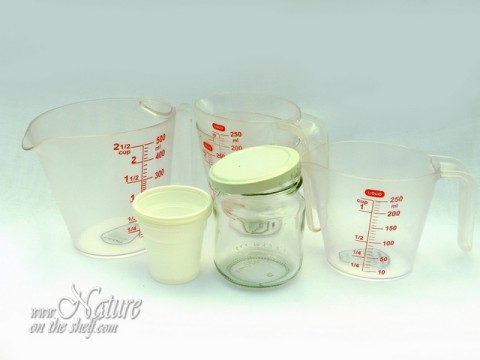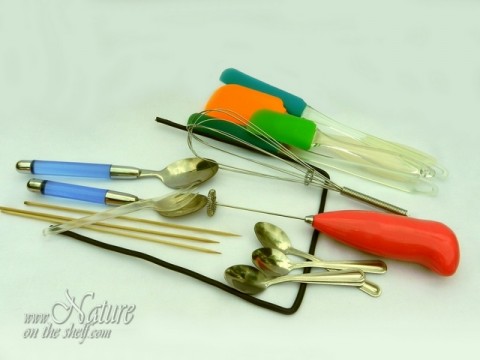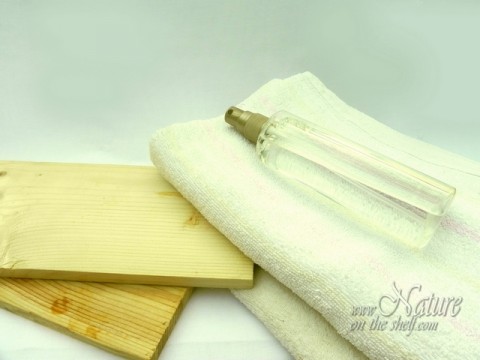Optional soap making equipment
There are many soap-making tools that are not necessary in making plain soap, but which can nevertheless be helpful to achieve desired results. Mixing colorants, preparation of additives, temperature control, swirling, prevention of soda ash… all of these require some additional tools.
A list of optional equipment that can be used in soap making is endless and often limited only by the soap maker’s imagination. Here are some of the most commonly used tools:
- A few plastic cups or bowls
- All additives should be measured and prepared in advance, so a few smaller cups should be available for that. These cups can also be used for mixing soap with colors when making swirled soap.
- Glass cup for essential and fragrance oils
- Undiluted essential and fragrance oils will melt the plastic so they should be measured and blended in a glass container.

- Mini-frother is often used to premix colorants with oil or water
- A few spatulas, spoons and mini-whisk to handle and mix additives and colored soap;
- Swirling tools
- Depending on the swirling technique, soap makers often use bamboo sticks, spoons, plastic hangers, squeeze bottles, funnels and similar tools meant for ‘in-the-mold’ swirling.

- Wax paper is used to line wooden and cardboard molds. It prevents sticking of soap to the molds;
- Plastic wrap (cling, saran wrap)
- Wrapping of the mold with a plastic wrap will reduce the amount of air in contact with the top of raw soap and consequently reduce forming of soda ash on top.
- Rubbing alcohol in a spray bottle;
- Spraying the top of freshly poured soap with strong alcohol can reduce soda ash.
- Cardboard or wooden lid to cover the mold after pouring of soap;
- Towels or blanket for insulation;
- Insulation will keep soap warm and it will speed up saponification and hardening. Insulation is particularly important if the gel phase is desired.

- Ice bath- a large bowl (or sink) filled with crushed ice;
- An ice bath is helpful for fast cooling of lye and oils to the desired temperature.
- Soap rack
- Curing of soap takes a few weeks. During that time, soap should be stored in a well- aerated place at room temperature and protected from direct sunlight.
- pH strips
- Soap is safe for the skin when its alkalinity falls down to pH 10 or less. This must be checked before use of each batch of soap. The easiest and cheapest way for checking pH is to use pH strips (Litmus paper).
